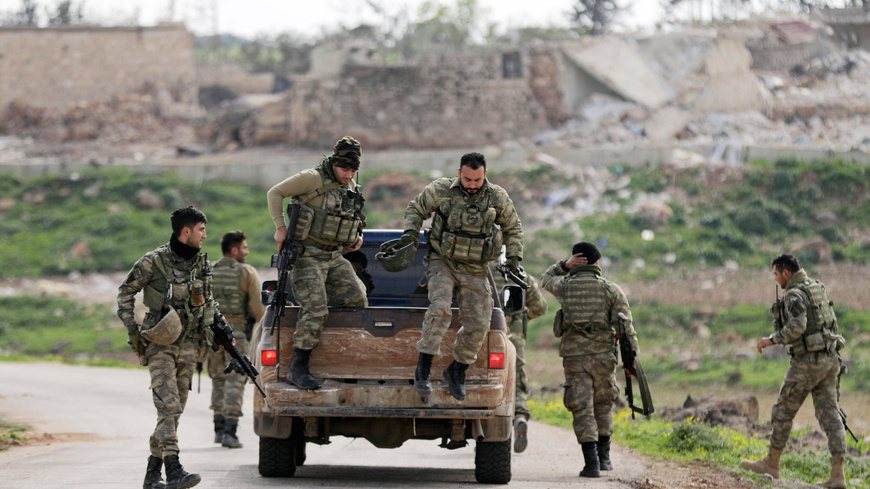NATO Allies Play War of Aggression in Northern Syria
In late January, Turkey launched a military offensive, codenamed Operation Olive Branch, against the Kurdish enclave of Afrin region controlled by People’s Protection Units (YPG). This is the first major operation after the Euphrates Shield in August 2016. The latest offensive was directed against the YPG who are not any different from The Kurdistan Workers’ Party (PKK) and is considered as a terrorist organization by Ankara. Turkey had been fighting PKK and other groups for several decades, to defeat a protracted insurgency that has cost at least 40,000 lives so far.
While PKK has been labeled as a terror outfit, YPG-dominated Syrian Democratic Forces (SDF) received massive backing from the U.S. This led to various conflicts between these two NATO states, which widened after the U.S. disclosed its plan to create a new border security force. The new unit was intended to be deployed along the Turkish border and along the Euphrates River, which is the border between SDF and Syrian government-controlled territory in the east.
On the other side of the spat, then-Secretary of the State Rex Tillerson denied the claim of the border force, remarking that the issue of incensing Ankara had been “misportrayed.” Rather, he said that the U.S. military will provide training to local groups to help them secure the areas that were liberated from the Islamic state over past three years. This is clearly a paradoxical situation of arming a group under the disguise of training.
However, the growing U.S.-Turkey tension pushed Tillerson to visit Ankara to fix the points of contention. At the end of the meeting, the U.S. and Turkey produced a joint mechanism to coordinate their efforts in northern Syria. This could mean Joint U.S. –Turkish coalition force in Manbij which would replace YPG/SDF presence there. That means a compromise as Kurds are expected to pull back to the east of Euphrates while the Arab remnants of SDF remain in Manbij or are replaced by Turkey-backed rebels.
The tussle over Manbij in the past led to Turkish threats for launching another offensive against Manbij. In response, General Joseph Votel, the head of CENTCOM, and the commander of the U.S.-led anti-ISIS forces operating in northeastern Syria reiterated that “American troops positioned near Manbij will not be redeployed to enable a Turkish attack on that city.”
Turkey has been particularly disturbed by the U.S.-YPG alliance, which seems to remain in place in Syria to balance expanding Iranian influence. And this is a great concern for Turkish national security. Deputy Prime Minister Mehmet Simsek pointed that the operation was Turkey’s legitimate and rightful action against a terror threat which had been lurking since mid-2015.
On the other hand, Turkish President Recep Tayyip Erdogan urged the Syrian rebels to support Turkish effort to clear the “terror nests” of Afrin and Manbij. The Syrian rebels are willing to fight Turkey’s battle, hoping that they will help them to fight Bashar al-Assad. In addition, FSA had also been seen petitioning the Trump administration for the revival of CIA’s Syrian rebel assistance program if it is serious about challenging Iranian dominance in Syria.
On the other side of this conflict-within-a conflict is that Ankara claimed that US National Security Adviser H.R McMaster told Turkish Presidential adviser Ibrahim Kalin in a phone call that the United States is done arming the YPG. This led YPG leaders wonder that how can the U.S. stand by and watch. Aldar Khalil, a senior Kurdish politician stated that “they (U.S.) should meet their obligations toward this force that participated with them (in the fight against terrorism). We consider their unclear and indecisive positions as a source of concern.”
This should not come as a surprise to the YPG Kurdish force as one can go back about 27 years to realize how far the U.S. is willing to risk for Kurds when it does not suit their interest. In other words, the U.S. has already disowned the YPG, signaling that it won’t come to their aid as they have no interest in Afrin. It is not important for the U.S. to do more than occasionally chide Ankara about the need for calm and restraint.
The Turkish military force was already struggling to inflict a decisive blow to YPG due to their defensive guerrilla campaign. And with the involvement of Syrian army, the situation in Syria escalated to unpredictable level, when YPG shot down a Turkish helicopter. As a result, Turkey sought U.S. help to prevent the SDF from sending reinforcements to YPG militia in Afrin.
On March 6, President Erdogan said that “The terrorist corridor that is being set up all along our border has but one target, and that is Turkey’s territorial integrity. “You were supposed to be our friends. What kind of friendship is this? is this? You were supposed to be our allies, we’re supposed to be together in NATO. They are like ostriches” sticking their heads in the sand, he said, without explicitly naming the United States.
However, U.S. did nothing much about that demand. This did not stop Turkey from pushing deep into Afrin, and setting up a police force police the areas taken from YPG, the state-run Anadolu news agency reported. Shortly after that, Turkey-allied Syrian rebels announced their victory over YPG.
Besides Afrin victory, the rebels are now eyeing for a final confrontation with al-Qaeda-linked elements in the northern Syrian province of Idlib. The rebels even appear to content for helping the Syrian regime army if there would be a political transition without Assad in the future.
It seems that the rebels believe that if Assad stays with his apparatchiks this war will never end. But if there is a transition away from Assad and his top echelons in the leadership then the rebels can work together with the army with the support of the international community to impose security on all the liberated areas. But FSA’s close association with Turkey makes it less reliable in the eyes of ordinary Syrians.
While Turkey is as well satisfied with its victory in Afrin and is planning a move against the YPG in Manbij, the U.S. France and the U.K. started to bombard Syria on April 13. This has given many people a cathartic moment without having to produce any new and effective resolution about how to deal with the worsening conflict in Syria.
For Trump, it was an opportunity to follow his guiding principle of doing something different from Barack Obama. For many customary critics of Trump, the strike has been an opportunity to look tough on Syria and to avoid just empty rhetoric. Although in a Pentagon briefing, James Mattis has described the strike as a “one-time shot”, Macron and Theresa May stated that if Assad does not stop using chemical weapons such strikes would persist. In fact, they are also now planning to establish a non-military mechanism for responding to future alleged chemical attacks.
While the situation is still developing, the U.S.-led strike has damaged the hope of achieving a political resolution anytime soon. For Assad, it has been an opportunity to stand tall and look unperturbed in the face of the most modern weapon that Western powers could throw at him. But the changing dynamics of Syrian civil war might push him to seek more Russian-Iranian support to confront the growing challenges.
As a result, the involvement of various external actors will further make the war complex and it might continue for few more years. And whichever constellations emerge triumphantly, will decide the future of Syria.




Comments are closed.